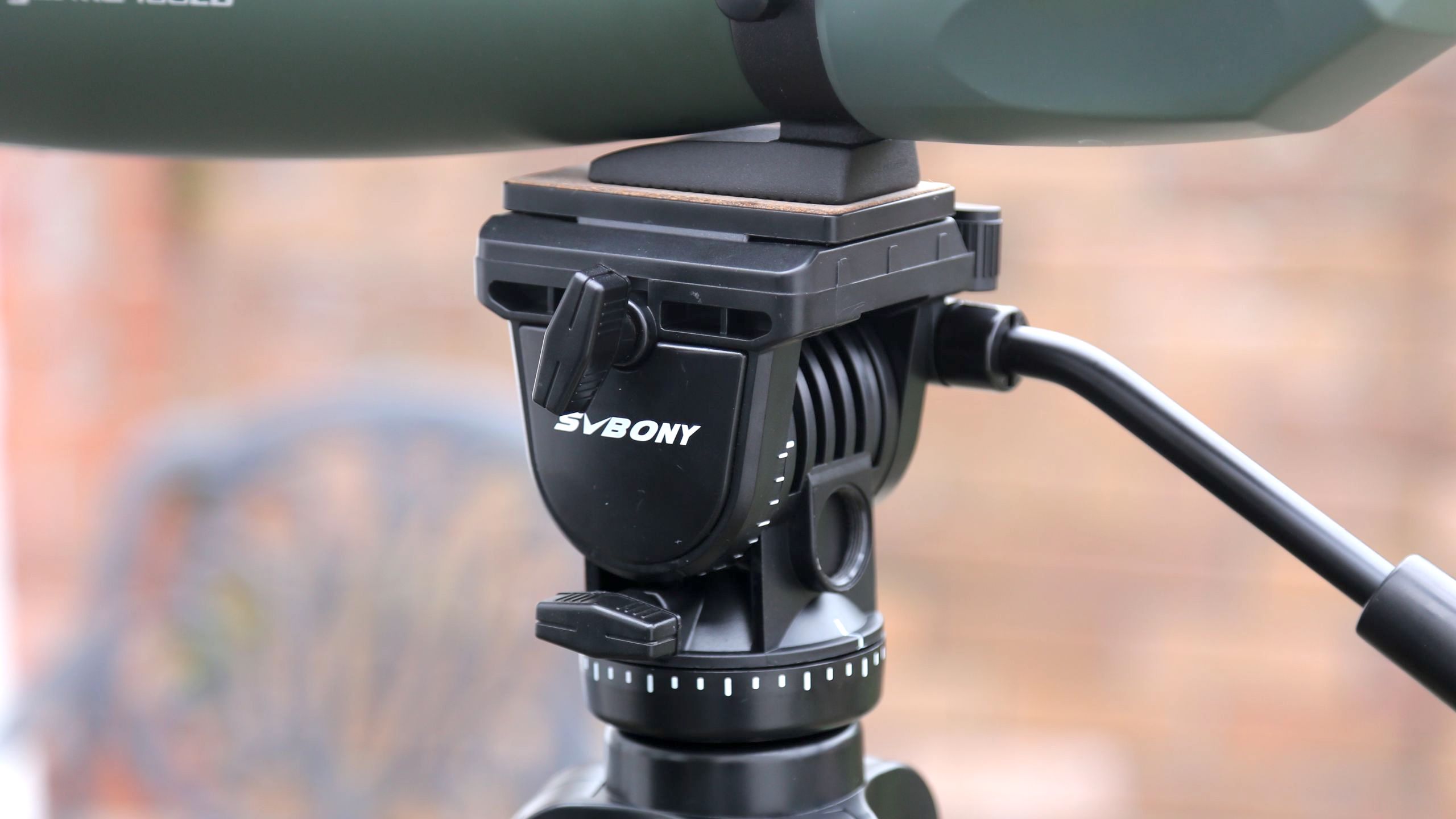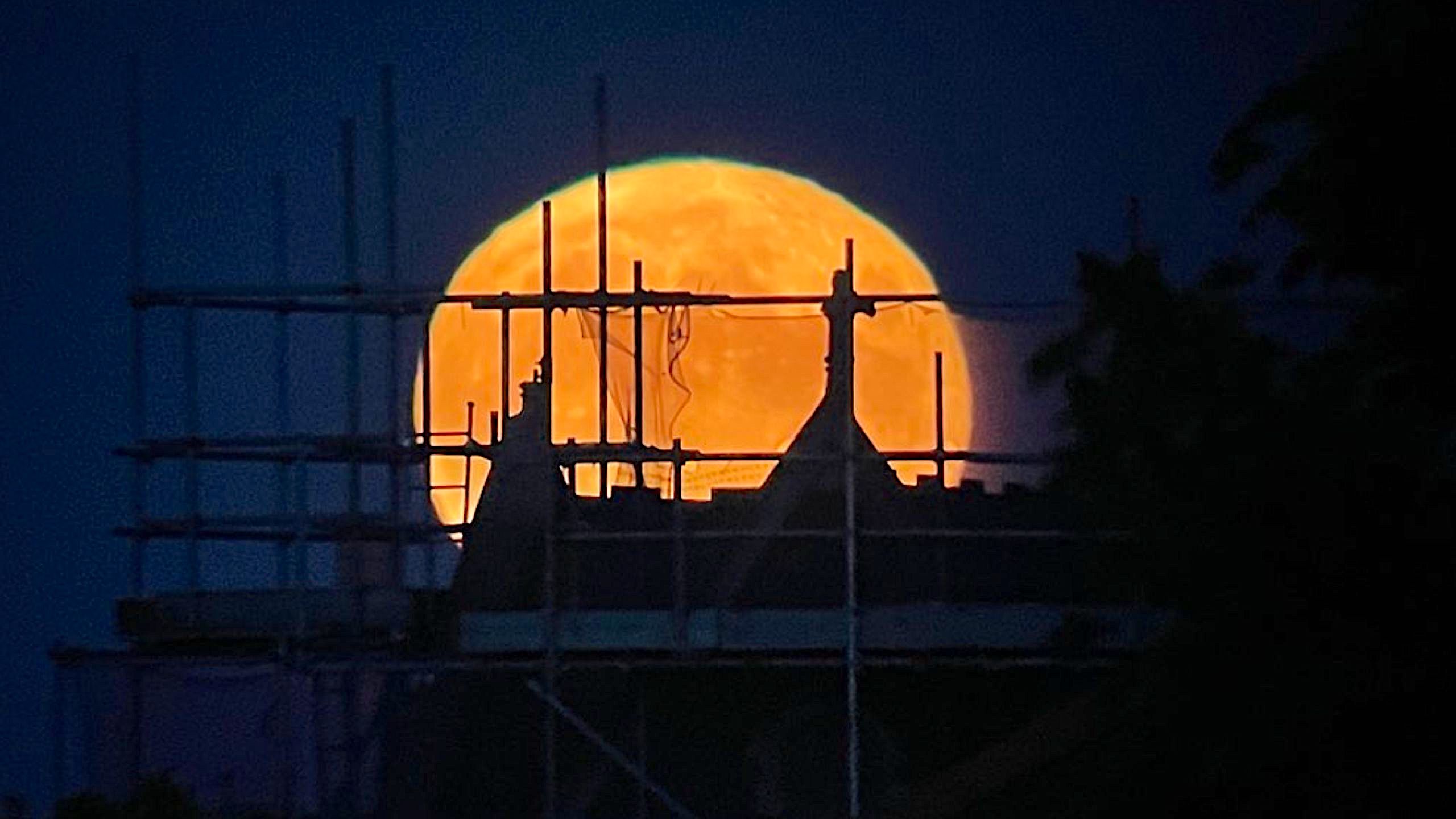Digital Camera World Verdict
The Svbony SA402 is an entry-level aluminum tripod with a built-in pan and tilt head that’s ideal for using for video or with a spotting scope.
Pros
- +
Lightweight design
- +
Spreader adds stability
- +
Built-in spirit/bubble level
- +
Carry case with shoulder strap
Cons
- -
Can’t swap-out head
- -
Max load is 6kg/13.2Ib
- -
Lacks fine hand control
Why you can trust Digital Camera World
The Svbony SA402 tripod is all about affordability. Its aluminum-meets-plastic construction has that writ large, but this lightweight three-legged support proves itself as a great value addition to any spotting scope or for use as a video tripod. That’s largely down to its permanent pan-and-tilt head, though that all-in-one design won’t suit everyone. Here’s how we got on with the Svbony SA402 tripod.
Svbony SA402 tripod: key features
The Svbony SA402 is lighter than a lot of travel tripods. It weighs a mere 2.2kg/4.85lbs and ships with a neat shoulder bag with an adjustable shoulder strap. When it’s as compact as possible it stretches to just 70cm/27.5” while its 164cm/64.5” is about the right height to conveniently use at chest height. That’s thanks to a centre column, which extends through the final 30cm/12”. Its maximum load is 6kg/13.2Ib, which precludes any weighty telephoto lenses and astrophotography set-ups, but is enough for most cameras and a spotting ‘scopes.
If the Svbony SA402 is made to move, it’s also made to swivel. Atop the tripod is a pan and tilt head. It’s plastic, but covers most of the bases. It pans through 360º and tilts to face both the floor and the zenith. The Svbony SA402 boasts an ergonomic design, with the pan and tilt locking knobs operated by the left hand and a protruding hand control with the right controlling all movement.
Its tripod is a three-section affair, with decent-sized rubber pads on the bottom to prevent slippage. The legs lock in place using flip-lock clasps while a three-pronged spreader between the first and second stage adds extra stabilization. Thankfully there’s a friction control knob that can be locked in place. The pan and tilt head uses a quick release plate with a 1/4-inch tripod thread that is very easy to clamp in place and release. However, there’s no base plate so it’s not possible to remove the pan and tilt head.
Specifications
Dimensions: 130 x 130 x 715mm
Weight: 2.2kg/4.85lbs
Material: Aluminium alloy and ABS
The best camera deals, reviews, product advice, and unmissable photography news, direct to your inbox!
Maximum load: 6kg/13.2Ib
Leg sections: 3
Max height: 164cm/64.5”
Min height: 70cm/27.5”
Folded height: 70cm/27.5”
Tilt range: +90 to -90 degrees
Svbony SA402 tripod: performance
The Svbony SA402 proved just about precise enough for a session using a spotting ‘scope on the Moon and Jupiter. Slewing from one to the other proved easy enough and it was possible to lock both the pan and tilt plastic bearings in place reasonably accurately, though there was a touch of droop on the tilt axis. We quickly learned to account for it. It settled reasonably close to where we wanted it and, for the money, was as accurate as expected. We then attached a smartphone clamp and took some images of the Moon fairly easily, though better hand controls would be very useful for making fine adjustments. It’s also slightly wobbly, which doesn’t affect the stability of the tripod, but does make it unpleasant to use.
Given the Svbony SA402’s plasticky construction its spreader is critical in keeping the tripod steady. A nice addition would be a hook on the bottom of the central shaft to hang a bag, giving the option to add even more stability.
The center column itself is reasonably steady, though we’re not convinced it needs a wind-up/wind-down handle on the tripod’s canopy. It’s useful to make small adjustments if the load is heavy, though with the small spotting ‘scope we used it was easier to manually move the center column into position, which sets the handle spinning wildly. That canopy also includes the spirit level and a lock for the center column.
Svbony SA402 tripod: verdict
Given that the pan and tilt head is not swappable the Svbony SA402 is less than versatile. So if you want a does-it-all tripod that you can change from a pan and tilt to a ball-head and back, it’s not for you. However, if you’re after a relatively basic tripod for small loads that can be locked at all angles then the Svbony SA402 makes a persuasive case. It would be an ideal purchase for pairing with a basic video rig or as the permanent partner to a spotting scope.
Do also check out our guides to the best budget tripods, and to the best travel tripods.

Jamie has been writing about photography, astronomy, astro-tourism and astrophotography for over 15 years, producing content for Forbes, Space.com, Live Science, Techradar, T3, BBC Wildlife, Science Focus, Sky & Telescope, BBC Sky At Night, South China Morning Post, The Guardian, The Telegraph and Travel+Leisure.
As the editor for When Is The Next Eclipse, he has a wealth of experience, expertise and enthusiasm for astrophotography, from capturing the moon and meteor showers to solar and lunar eclipses.
He also brings a great deal of knowledge on action cameras, 360 cameras, AI cameras, camera backpacks, telescopes, gimbals, tripods and all manner of photography equipment.









